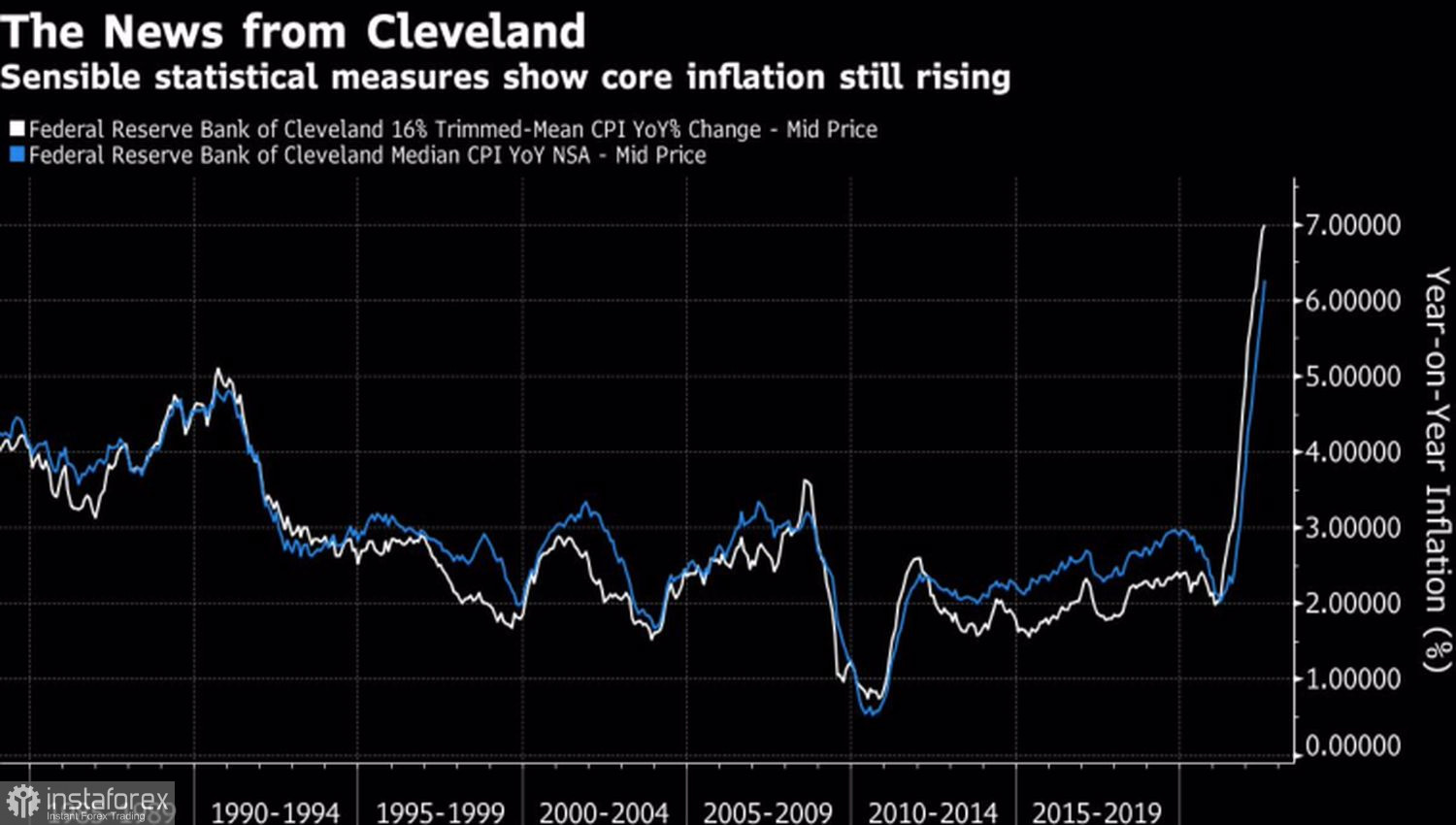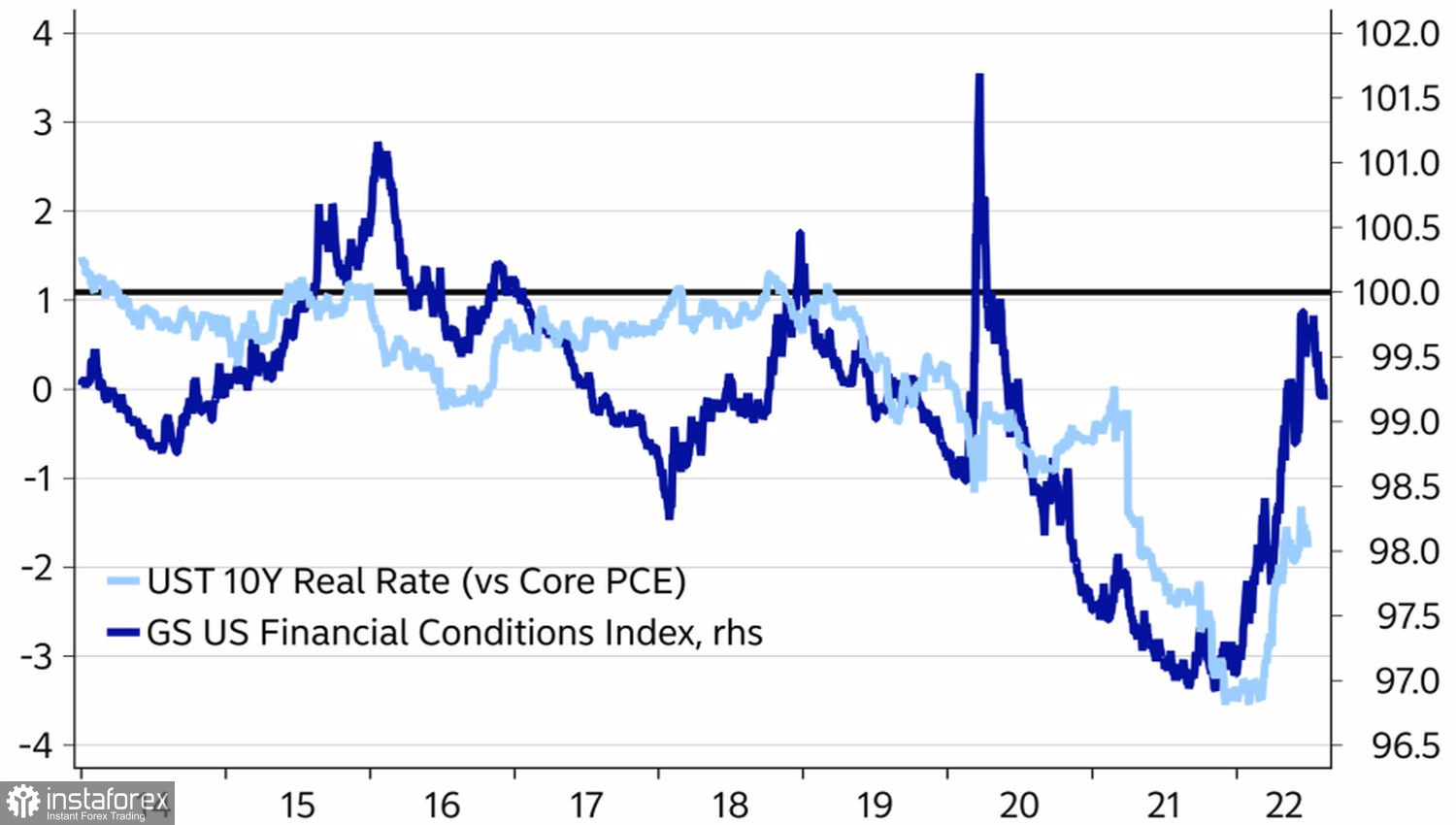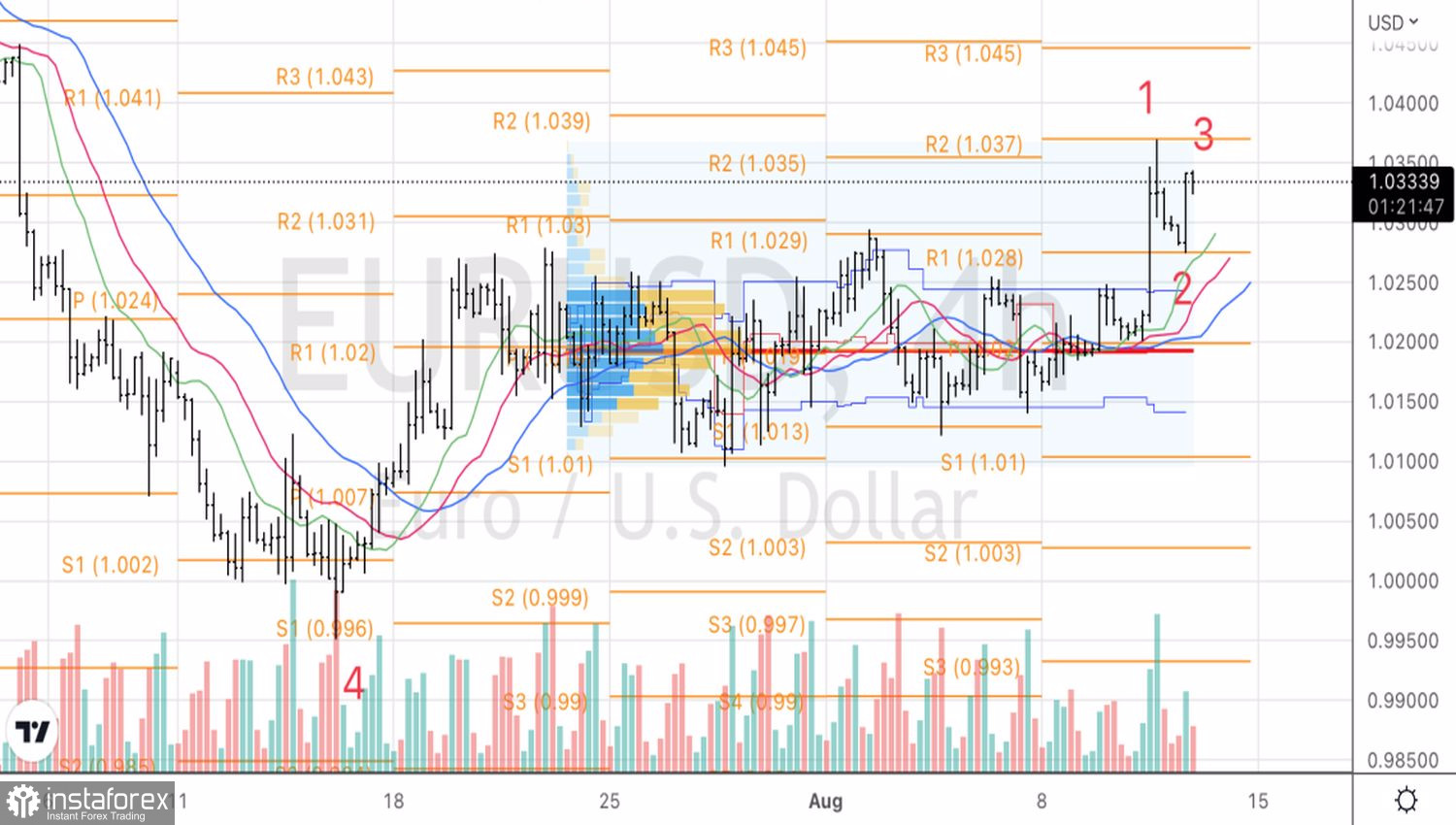The news that consumer prices in the US stopped growing in July for the first time in the last 25 months inspired EURUSD bulls to exploits. Thanks to the rapid rally in US stock indices, falling Treasury yields, and an increased likelihood that the Fed will raise the federal funds rate by only 25 bps in September above 50%, the euro soared to $1.037. Rising global risk appetite has hit the US dollar hard, but how long will the market euphoria last?
The main reason to buy the euro was rumors that inflation in the US had peaked and passed. Indeed, the slowdown in consumer prices from 9.1% to 8.5% confirms this idea. However, what will be the descent? And what caused the slowdown? Prices for used cars and rentals, airline tickets, and energy, the most volatile elements of the CPI, have indeed fallen. But the Fed cannot influence them. Besides, the truncated average inflation rate from the Cleveland Fed continues to be at its maximum.
Dynamics of truncated average inflation in the USA

Rising stocks, falling Treasury yields, and a weaker US dollar makes financial conditions more favorable for business. As a result, the mechanism of the Fed's influence on inflation suffers. The central bank would like to tighten financial conditions, as this will force companies to give preference to the former when choosing between paying on a loan or raising wages, which will eventually result in lower prices.
Dynamics of financial conditions and real rates in the United States

Thus, the slowdown in inflation looks like a mirage, and the reaction of financial markets to the statistics on consumer prices undermines the Fed's efforts to return CPI to the 2% target. What will the Central Bank do in this case? In my opinion, it will increase the degree of hawkish rhetoric. San Francisco Fed President Mary Daly does not rule out a 75 bps increase in the federal funds rate in September, while her Minneapolis colleague Neel Kashkari believes borrowing costs will rise to 4.4% in 2023.
The fight between the financial markets and the Fed continues, and the first round was left to investors. However, the "don't go against the Fed" principle always works, so should the EURUSD bears throw in the towel?

At the same time, it must be understood that an improvement in global risk appetite usually occurs when the global economy is gaining momentum. However, China's problems with COVID-19 and the real estate sector signal a slowdown in GDP. According to Bloomberg forecasts, the eurozone will completely slide into recession in Q4 2022–Q1 2023. The states are also slowing down. Global GDP is under attack, while stocks and the euro are rising. Isn't it a paradox?
Technically, a 1-2-3 reversal pattern is forming on the EURUSD 4-hour chart. If the "bulls" cannot update the local high near 1.037 in the short term, the fall of quotes below the support at 1.0275 should be used for sales.





















